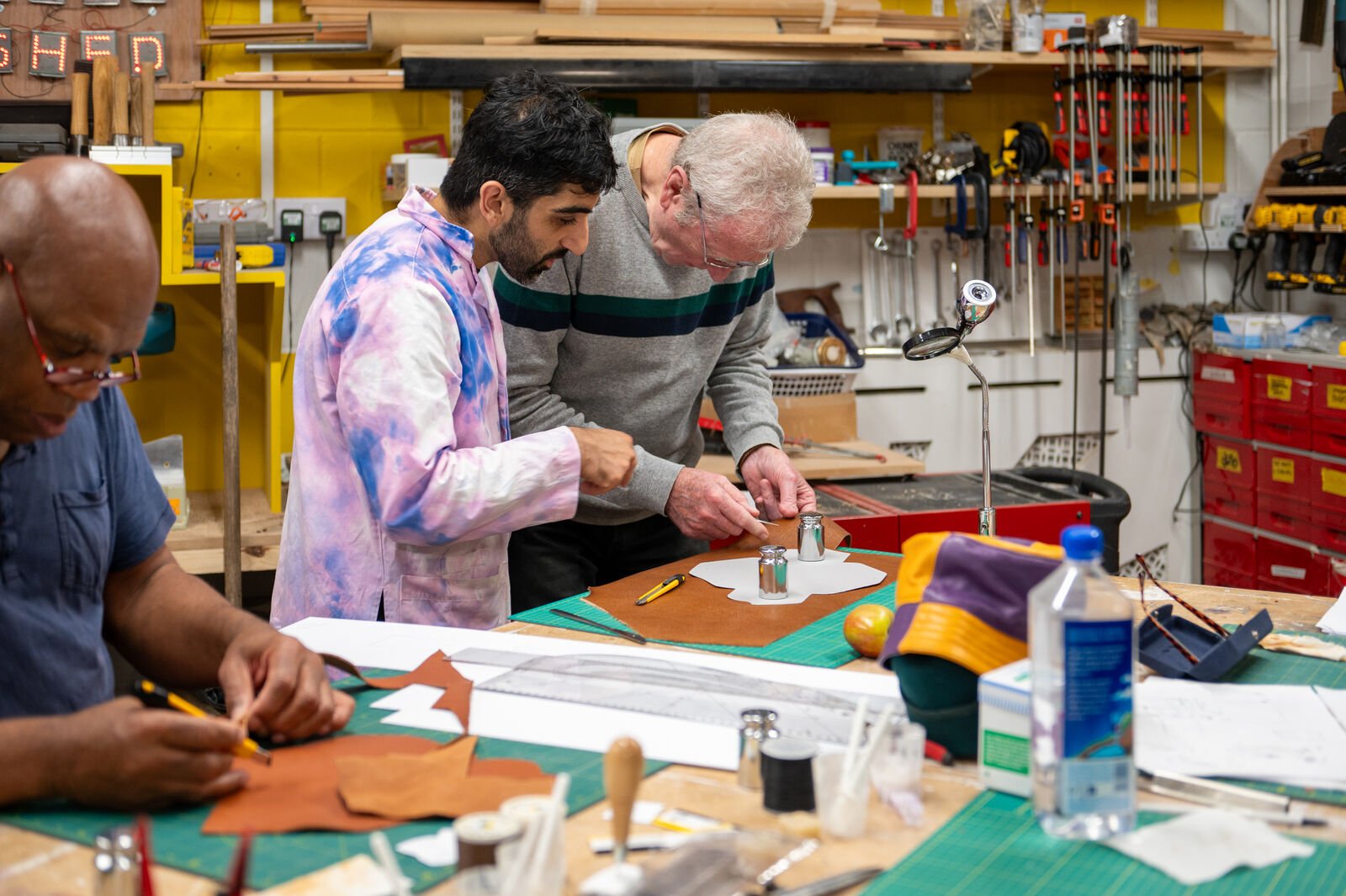
Maxilla Men's Shed is a free community makerspace designed to reduce social isolation in men
Photo: Andreia Sofia, courtesy of ACAVA Shoots
Creative spaces, healthier places: How the arts can drive social impact
Creative placemaking is vital for community cohesion, writes Tom Holley. But more than social benefits, it can generate significant economic returns too.
There is great strength in sharing a place with someone. Modern life pushes strangers to inhabit the same spaces, which is both a wonder and a challenge. Walking the same streets gives people something in common with one another – but often, that communal connection needs a helping hand.
Take Gerald, a North Kensington local for over fifty years. His adult children have been priced out of London, his wife has passed away, and the streets he knew have completely changed. Hoardings showing people that don’t look like him hide developments that he and his neighbours could never afford. He feels disconnected from anyone or anything around him. He feels lonely.
Gerald might be a fictionalised character, but his story speaks to widespread issues, and as professionals in the arts, we know our spaces can become places of connection, healing and community.
Fostering change
At ACAVA (Association for Cultural Advancement through Visual Arts), we have witnessed the transformative power of communal spaces when used for collaboration and co-creation.
For 50 years, we have worked with developers and landowners to convert meanwhile spaces into affordable creative studios and partnered with councils and cultural organisations to develop impactful community arts initiatives. For 30 years, we have worked with the NHS, pioneering the role of art and creativity in non-clinical health and wellbeing settings.
Our model goes beyond managing physical workspaces; it fosters tangible connection and change. Currently, we support over 400 artists across 15 buildings, operating at 98% occupancy. This sustainable approach allows us to engage in socially inclusive placemaking projects, like the Maxilla Men’s Shed, a free community makerspace for craft and carpentry projects – designed to reduce social isolation in men, but open to all.
Our flagship family programme, Flourish, began in our North Kensington studios and has since expanded to Brent. Developed during the Grenfell tragedy, it uses a trauma-informed approach to build resilience in local families alongside local artists. These projects, embedded within artist workspaces, deliver direct benefits to the communities around them.
Social benefits
Integrating creative activities in placemaking offers multiple benefits that align with arts organisations’ roles in the cultural sector and beyond. A 2021 study by Creative Land Trust found property values in creative clusters outperformed the London average by 4.4% per year over a decade. But the true value of these spaces goes far beyond financial metrics. Creative spaces provide a cost-effective form of social value.
For us, the social benefits of our projects are clear. Our Cultivate Create gardening project saw 90% of participants report improved wellbeing, and 66% of our community workshop members reported feeling less anxious after attending. This kind of social prescribing not only enriches lives but can ease the burden on health services, assisting local healthcare budgets while highlighting the arts’ role in non-clinical care.
The UK government recognises creative placemaking as vital for community cohesion. At ACAVA, we are the lead arts organisation in the Grenfell Tower recovery efforts, bringing local people together through creativity to improve wellbeing and counter social isolation.
Continues…

Flagship family programme Flourish. Photo: Andreia Sofia, courtesy of ACAVA Shoots
Making it happen
To start integrating this approach, we recommend arts organisations identify underutilised spaces that could be transformed into creative hubs. Collaborating with councils, developers and health services can align these spaces with broader community needs.
Consider embedding creative space requirements in local development plans to ensure creativity is central to growth strategies. Establishing cross-departmental task forces that include culture and planning can foster initiatives that align with health, housing and economic goals, taking a holistic approach to community improvement.
By embracing creative placemaking, arts organisations can address challenges: revitalising underused spaces, fostering community connections and improving mental health outcomes. ACAVA’s decades of experience show that partnerships between councils and arts organisations lead to innovative solutions for resilient, connected communities.
Significant economic returns
Investment in creativity today can generate significant social and economic returns, creating vibrant neighbourhoods where people feel a sense of belonging and purpose. The future of urban planning can be brighter with arts spaces woven into the fabric of our towns and cities, fostering wellbeing and countering loneliness in a cost-effective, sustainable way.
As one of our Men’s Shed participants (perhaps it was Gerald!) said: “I sleep better because I’ve actually done something – you feel a bit depressed and useless. But if you do something and see it coming along, you’ve helped someone or had a laugh with them, it puts a little bit of a spring in your step.”
Join the Discussion
You must be logged in to post a comment.